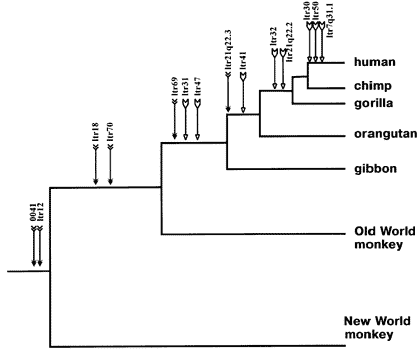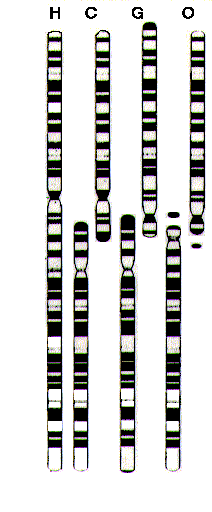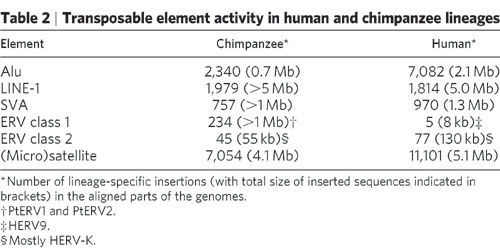The modern mystics who imagine life emerging from the Darwinian warm little pond are nothing new under the sun. Mythographers have been attributing to primordial elementals what is rightfully attributed to God since the dawn of time:
The Mesopotamian mythographers took their inspiration from thier own country...When nothing yet had a name, that is to say when nothing had yet been created, they wrote, Apsu (the fresh waters) Tiamat (the salt waters) and Mummu (the clouds) formed together one single confused body:
"When on high the heaven had not been named, Firm ground below had not been called by name, Naught but primordial Apsu, their begetter, and Mummu and Tiamat she who born them all. No reed hut had been matted, no marsh land had appeared, when no gods whatever had been brought into being. Uncalled by name their destinies undetermined. Then it was that the gods were formed withing them." (Ancient Iraq, Georges Roux)
The elemental muse was greater in pagan myths then the gods, they in fact gave rise to them. These naturalistic mechanisms are the creator in the mind of the mythographers of ancient and modern times.
I would be very interested to see this. Unless I’m missing something, finding a working GULO in any modern human would undermine my entire pseudogene argument as evidence for common ancestry.
I don't know why you put so much importance on the disfuntional gene but it may well work in Eskimos:
In a discussion of whether Eskimos are obligatory carnivores, as are cats, Sinclair (1981) stated: 'It is also possible that Eskimos, like other carnivores, have not lost the enzyme that makes ascorbic acid and therefore do not need dietary sources.'
HYPOASCORBEMIA
In fact, I think that would be a major problem for common ancestry altogether.I’m not arguing that the evidence I’m presenting leaves no other alternative but common ancestry.
Why do evolutionists insist on painting themselves into this corner? Most other mammals possess the enzyme L-gulonolactone oxidase. The Eskimos on the other hand survive on a diet of 90% meat and unless they are producing vitiman C from this gene their survival in the artic is inexplicable. This is a disfuntional gene, nothing more. Selective pressure on this gene could deliever this gene repairable to a functional status. This is in fact the only reasonable explanation for the presense of the gene in the first place, it served a purpose in the originally created kinds and simply feel into disuse over time. The conclusion of universal common ancestry begs the question of proof from this gene on it's hands and knees.
Common ancestry is not an explanation, it's ad hoc conjecture based on anecdotal evidence. Jumping to conclusions with both feet does not produce the mental and physical tools of science. It conflates the evidence and buries it in a modern mysiticism that assumes exclusivly naturalistic causes like the pagan mystics of ancient times.
Unlike many of the evolutionists I have encountered over the last couple of years, you seem honest at least. I think you really are seeing things exactly as you describe them and I'm trying to understand why. Perhaps because that is the only truth you trust and God as an explanation simply isn't an option, I don't know.
If I’m understanding correctly, if we find different genetic sequences in identical locations for organisms that are supposed to share a recent common ancestor (like humans and chimps) then it would suggest special creation.
If we are looking at a gene that is identical in two species both closely and distantly related to other species with the exact same gene with the exact same mutation in the exact same place. That is a pretty compelling argument for common ancestry. In this case I don't think you have anything like that since it works in most mammals and probably is either function on some human populations or repairable in some way. The human being is unique amoung living systems and diverges from the chimpanzee right down to the sequences of the DNA. For years geneticists have been claiming that we are 99% identical to apes in our DNA.
Cover Story: What Makes us Different? Not very much, when you look at our DNA. But those few tiny changes made all the difference in the world
They claim we are 98% the same as chimpanzees in our DNA and they know that this is not true. Why would they lie? Because the mutation rate for hominids does not account for the divergence between chimpanzees and humans. Nature did the exact same thing when announcing the Chimpanzee Genome. They claimed that in our DNA we are 98% the same as chimpanzees and they know this is not true. Type 'chimpanzee genome' into you google search engine and you will find this at the top:
What makes us human? We share more than 98% of our DNA and almost all of our genes with our closest living relative, the chimpanzee. .
Nature Web Focus: The chimpanzee genome
The study they are announcing clearly indicates that the two geneome diverge by at least 100,000,000 more base pairs then Time or Nature are telling you. If you are wondering why creationists don't accept what mainstream science, it's not because we are incredulous. It's because we are tired of being lied to and then talked to as if you are stupid for not believing it. They lie to us and call it science.
You sill don’t understand it fully. The rat has a working copy. Only the primates are missing the single nucleotide. ONLY THE PRIMATES. The guinea pig has a GULOP that is broken differently than the primates. Go back and look more closely. Not only do the primates share this distinctive deletion but a close look at the gene, nucleotide by nucleotide, reinforces the nested hierarchy. Understand now?
I understand perfectly, I understood it the first time. I understand you are putting importance on this disfunctional gene that doesn't prove anything one way or the other.
Let's cut to the chase, brian size and complexity is the prize. What common ancestry has to have is a genetic mechanism for overhauling the neural genes of apes, which results in the brain tripling in size. Comparisons of genes involved in neural functions are turning up some pretty compelling arguements for special creation.
You will find that every human trait from head to toe, literally, is unique in many or most respects. When the DNA was thought to be 99% it was no problem reconciling the mutation rate to divergence between chimpanzees and humans. Now it's impossible. This is a classic example, this is how the mutation rate has been reconciled to 98% of the DNA being the same:
Total divergence
For starters, we should be able to predict how different the genomes should be. The seven million years of evolution in each lineage represents about 350,000 generations in each (assuming 20 years per generation). How many mutations happen per generation? Estimating mutation rates is not easy (at least without assuming common descent): it is hard to find a few changed nucleotides out of 3 billion that have not changed. By studying new cases of genetic diseases, individuals whose parents' do not have the disease, however, it is possible to identify and count new mutations, at least in a small number of genes. Using this technique, it has been estimated[1] that the single-base substitution rate for humans is approximately 1.7 x 10^-8 substitutions/nucleotide/generation, that is, 17 changes per billion nucleotides. That translates into ~100 new mutations for every human birth. (17 x 3, for the 3 billion nucleotides in the genome, x 2 for the two genome copies we each carry). At that rate, in 350,000 generations a copy of the human genome should have accumulated about 18 million mutations, while the chimpanzee genome should have accumulated a similar number.
The evolutionary prediction, then, is that there should be roughly 36 million single-base differences between humans and chimpanzees.
Common ancestry of humans and chimpanzees: mutations by sfs
What Time, Nature and this little essay have completly ignored is that the diverence is not 32 Mb, it's upwards of 145 Mb and even the mutation rate for active viruses could not account for that level of divergence:
"By contrast, HERV-K18, RTVL-Ha, and RTVL-Hb are found only in humans, chimpanzees, and gorillas, which are thought to have diverged around 5 million years ago. To estimate the age of each provirus the human/chimpanzee distances from each tree were used to calibrate the rate of molecular evolution at each locus. The most recent common ancestor of humans and chimpanzees lived approximately 4.5 mya, so divedin the distance between the huyman and chimpanzee siquences (substitutions per site) by this numbner gives rates ranging from 2.3 to 5.0 x 10^-9 substitutions per site per year. These numbers are simular to the estimated rates of evolution for pseudogenes and noncoding regions of mammalian genes.
(PNAS Constructing primate phylogenies from ancient retrovirus sequences, 2006)
Put simply, at the upper end of retrovirus reproduction the substitutions per years are 5 per 1 billion base pairs. For the common ancestor starting 7 million years ago (not the 4.5 mya used in the PNAS paper) it would require no less then 20 base pairs per year and all of them would have to be permentantly fixed in the respective genomes. That is why Time and Nature lied, that is why now evolutionists are trying to make a base pair mean either one base pair or a million. The truth does not line up with the evidence so it's just not working.
As time goes by organisms in separate species acquire more and more of these differences. As the differences accumulate genetic divergence becomes greater and greater. When we really start to look at the gene sequences we don’t see these differences being the same between each species. Some species have a lot more similarities than others. We both seem to agree on this much.
We can agree that seperate species are marked by differences in the DNA sequences. If they are related by common ancestry the DNA will be virtually identical except for genes purged during bottlenecks. Gene flow is severly diminished at these times and evolution becomes a one way trip. Once the divergence is fixed from the originally created kind to potential for diversification begins to diminish.
Here I have evidence that takes a really close look at the similarities and finds that there are pieces of genetic code shared between species that is broken (same way and same location). The part that you keep missing is that different species have identical breakage. I don’t have to posit common ancestry to see this. Common ancestry is the conclusion that seeing this leads me to. If each separate species had the code broken in different ways then I could see your point. If there are humans with the gene currently working then it would effectively refute my argument altogether.
What refutes your arguement is not the simularities but the enourmous amount of divergence in such a brief period of geological time. In 2 1/2 million years the brain tripled in size, in fact, it started to grow 2 mya and was very close to modern proportions 1.6 mya. This does not happen in nature but if you line up the ape fossils next to the human ones it gives the illusion that it did. Your argument is refuted on the most conserved genes and tissue in the human body had to undergo an intense overhaul that has no know mechanism for creating or preserving them. Even the Chimpanzee Genome Consortium said that natural selection was not a factor in human evolution. They instead attributed it to regional variations of mutation rates. The mutation rates of viruses do not account for the level of divergence and they allude to regional variations. How much divergence could possibly have been gained by changing geological region?
You have made a decent effort in explaining this by positing some kind of weak point in the gene but close examination of other organisms that have the gene don’t show this weak point. This means that even if there was a weak point it’s only shared by these primates. This in itself would be evidence of common ancestry.
No I didn't, I conceded that identical breaks in identical genes are compelling evidence for common ancestry. I suggest other possibilities and offered the real basis for human evolution if it did indeed happen. It would have had to be in the neural genes.
Once you see that these primates acquired these identically broken genes from a common ancestral population then you will also make sense of the differences within the genes. If all the different species were specially created then the differences between these genes would be the same. This is not what we see though. Humans and chimps are the most similar, followed by orangs, followed my macaques. This is that pesky nested hierarchy that keeps rearing its head. It all makes perfect sense when positing common ancestry as the reason. This is why I accept it as provisionally true (not because I have anything against the idea that a deity created life).
The neural genes and the overall divergence is standing nested hiearchies on their heads. Apes are very simular, Old world monkeys are very simular, New world monkeys are very simular. Human neural genes are unique across the board.
Just so you understand where I’m coming from; My dismissal of a deity creating all the species without common ancestry is simply because the idea doesn’t hold up to the evidence at hand. To me it’s like dismissing the need for a deity to pull the sun across the sky. There are now better natural explanations for both. Neither is an argument that your deity doesn’t exist. It simply means it wasn’t responsible for creating the species without evolution and common ancestry.
It means you differ to primordial elementals what I attribute to God. I am certain that we have exausted the evidence for psuedo genes or at least argued it to a standstill. The ERVs have no rational basis for the contention that 8% of the human genome is the result of germline invasions so that will do absolutly nothing one way or the other.









